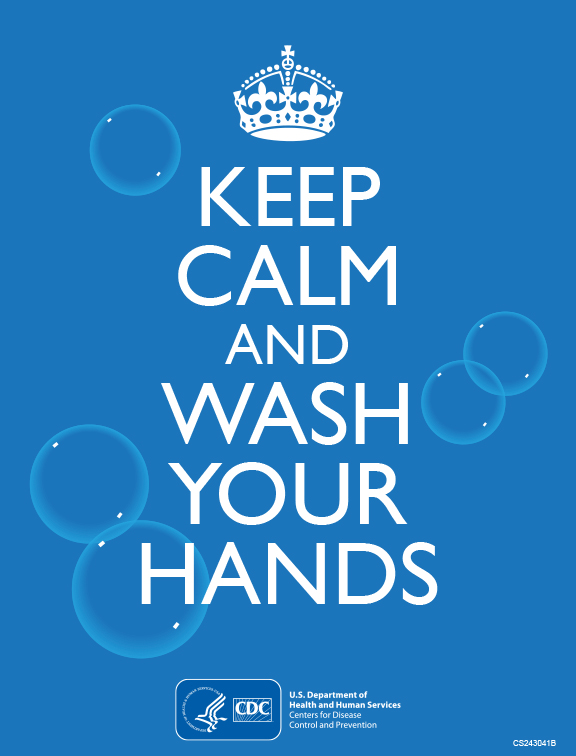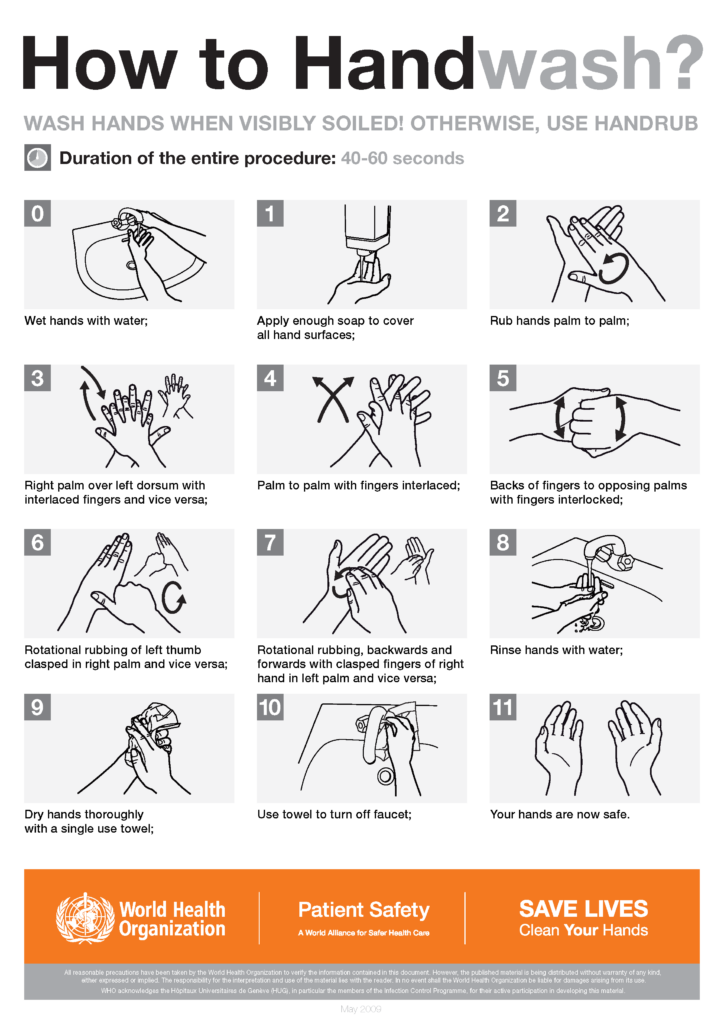The Short Version: Coronavirus (COVID-19) is a new type of virus that humans haven’t been exposed to before. It is spreading rapidly across the globe through what we suspect is similar to how the flu is spread. Right now, the most important thing is to focus on preventing the spread of transmission from person to person and from person to object to person. Below are the most important aspects of prevention as recommended by the CDC.
- Voluntary Home Isolation: Stay home when you are sick with respiratory disease symptoms. At the present time, these symptoms are more likely due to influenza or other respiratory viruses than to COVID-19-related virus.
- Respiratory Etiquette: Cover coughs and sneezes with a tissue, then throw it in the trash can.
- Hand Hygiene: Wash hands often with soap and water for at least 20 seconds; especially after going to the bathroom; before eating; and after blowing your nose, coughing, or sneezing.
- If soap and water are not readily available, use an alcohol-based hand sanitizer with 60%-95% alcohol.
- Environmental Health Action: Routinely clean frequently touched surfaces and objects

What is Coronavirus?
Corona Virus or COVID-19, is a virus that is a novel, or new, type of virus identified as being able to infect humans. It began in Asia and has quickly spread across the globe. The World Health Organization recently declared COVID-19 a pandemic. The word “pandemic” is terrifying. How many suspense and post-apocalyptic films start with that word? Our intent with this is to help you find a place for peace even as you stay vigilant to the risks of this infection.
First off, what is a pandemic? A pandemic is a NEW type of infection that spreads quickly around the world. Because it is new, the vast majority of us will not have immunity against this infection. To give perspective- another virus that we watch closely is influenza (the flu). There are actually a wide range of influenza variants, not just one flu virus. Each year, the virus mutates and changes in order to try to evade our immune system. If it changes enough, then more people’s immune system get fooled and they get infected. This is one of those viruses that is different enough that most people’s immune system doesn’t know how to fight it.
Who is being affected?
The first reports of cases from Wuhan, a city in the Hubei Province of China, at the end of 2019. The first confirmed case in the United States occurred on January 20, 2020, starting in the Seattle area. As of now, there are cases confirmed in 36 states with over 1,000 confirmed infections with more being reported on a daily basis. There are now nearly 100,000 cases world wide. It is likely that this virus will continue to spread as we live in a very connected world. Government agencies are moving to limit travel and large group settings as this is often how the virus is passed from one person to another.
How is it spread?
This strain of coronavirus is suspected to have come from an animal market in China, but currently we can confirm that it is being spread from person to person. We are still learning how this virus is being spread so more conservative measures are suggested. A person who has the virus is contagious and so far it has been confirmed by Chinese scientist that the virus is present in sputum throughout the respiratory system and to a much lesser degree in blood(~1% of patients). It may also be present in stool.
It is important to note that this virus has been found to live outside of the body and remain active and contagious on a wide variety of surfaces, including doorknobs, light switches, countertops, and credit cards, for hours to days.
Once in the body, it takes an average 5 days for symptoms to start to show up, but can take as long as 11 days for some. While some will be contagious even before they have symptoms, this doesn’t appear to be common.
https://www.ncbi.nlm.nih.gov/pubmed/32150748
First Steps for Prevention:
The CDC is recommending the following for cleaning & disinfecting:
- Routine cleaning of frequently touched surfaces (for example: tables, doorknobs, light switches, handles, desks, toilets, faucets, sinks) with household cleaners and EPA-registered disinfectants that are appropriate for the surface, following label instructions.
- If someone is sick, surfaces should be cleaned daily and the infected person(s) should be as isolated as possible- in other words, sticking to their bedroom and a single bathroom.
https://www.cdc.gov/coronavirus/2019-ncov/community/home/cleaning-disinfection.html
The Most Important Thing: WASH YOUR HANDS!
Washing your hands with soap and hot water is one of the most effective ways we know to prevent the spread of viral infections.

Resources:
https://www.nejm.org/doi/full/10.1056/NEJMoa2001191
https://www.nbcnews.com/health/health-news/coronavirus-map-confirmed-cases-2020-n1120686
https://www.cdc.gov/coronavirus/2019-ncov/faq.html#spreads
https://www.thelancet.com/journals/laninf/article/PIIS1473-3099(20)30144-4/fulltext
https://www.cdc.gov/coronavirus/2019-ncov/community/home/cleaning-disinfection.html
